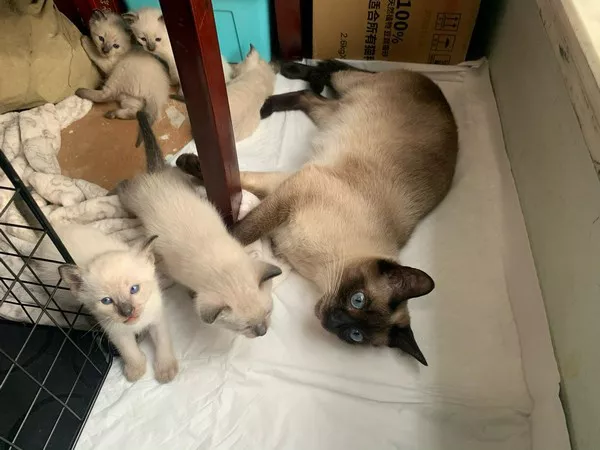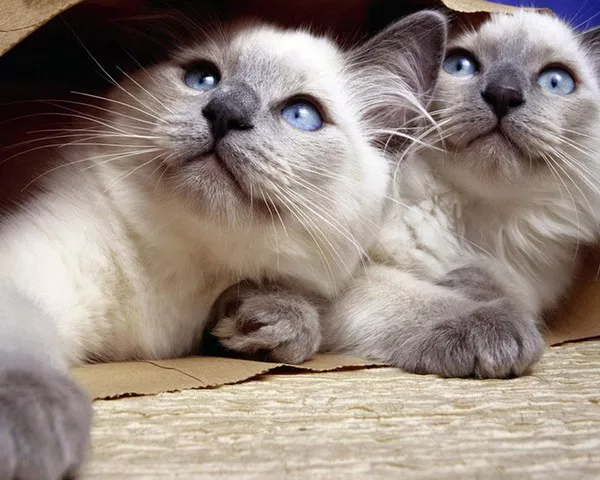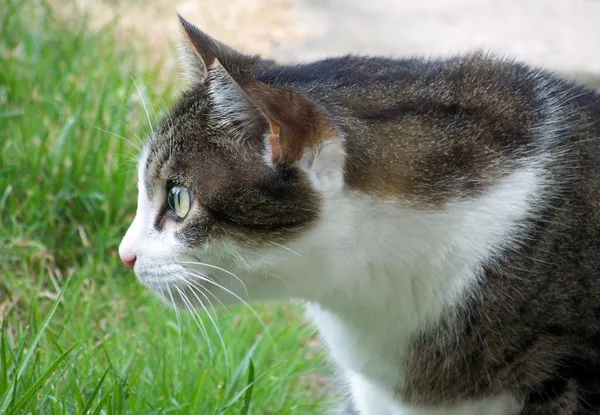Siamese cats are a beloved breed known for their striking appearance, affectionate nature, and vocal personalities. When it comes to breeding and pregnancy, understanding the specifics of their reproductive cycle is crucial for breeders and pet owners. This comprehensive guide covers the length of pregnancy in Siamese cats, the stages of gestation, and tips for care during this important time.
The Reproductive Cycle of Siamese Cats
Siamese cats, like other domestic cats, reach sexual maturity at around six to twelve months of age. The reproductive cycle of a female cat is known as the estrous cycle, which includes several stages: proestrus, estrus, metestrus (or diestrus), and anestrus.
Proestrus: This stage lasts about one to two days, during which the female cat starts to attract males but is not yet ready to mate.
Estrus: Also known as “heat,” this stage lasts from four to ten days. During estrus, the female cat is receptive to mating and may exhibit behaviors such as vocalizing, rolling on the floor, and increased affection towards humans or other cats.
Metestrus: If the cat does not mate, this stage follows estrus and can last from one to two weeks. The cat’s behavior returns to normal as she exits the reproductive phase.
Anestrus: This is the period of inactivity between cycles, often occurring during the shorter daylight months in non-equatorial regions.
Length of Pregnancy in Siamese Cats
Typical Gestation Period
The average gestation period for Siamese cats, like most domestic cats, ranges from 63 to 65 days. However, this can vary slightly depending on individual factors, with some pregnancies lasting as short as 58 days or as long as 70 days.
Factors Influencing Gestation Length
Several factors can influence the exact length of a Siamese cat’s pregnancy:
Age and Health of the Queen: Younger and healthier cats tend to have more predictable gestation periods, whereas older or less healthy queens may experience variations.
Number of Kittens: Litters with more kittens may result in a slightly shorter gestation period due to the increased demand on the mother’s body.
Environmental Factors: Stress, changes in environment, and overall care can impact the duration of pregnancy.
Stages of Pregnancy in Siamese Cats
First Stage: Early Pregnancy (Days 1-21)
During the first three weeks of pregnancy, the fertilized eggs travel to the uterus and implant in the uterine lining. At this stage, there are few visible signs of pregnancy. Some cats may experience morning sickness, characterized by vomiting and decreased appetite.
Second Stage: Mid-Pregnancy (Days 22-42)
By the fourth week, the embryos develop into fetuses, and the queen’s abdomen begins to swell. This stage is marked by noticeable weight gain and increased appetite. A veterinarian can confirm pregnancy through palpation or ultrasound by this time.
Third Stage: Late Pregnancy (Days 43-65)
In the final three weeks, the fetuses grow rapidly, and the queen’s abdomen becomes significantly larger. The mammary glands enlarge, and milk production may begin. The queen may start nesting behavior, seeking out a safe and quiet place to give birth.
Signs of Pregnancy in Siamese Cats
Behavioral Changes
Pregnant Siamese cats may exhibit several behavioral changes throughout their pregnancy:
Increased Affection: Many queens become more affectionate and seek more attention from their owners.
Nesting Behavior: As birth approaches, the queen will look for a secure, quiet place to deliver her kittens.
Decreased Activity: Some pregnant cats may become less active, conserving energy for the demanding final stages of pregnancy.
Physical Changes
Visible physical changes occur as the pregnancy progresses:
Swollen Abdomen: By the fourth week, the abdomen begins to swell noticeably.
Enlarged Mammary Glands: The mammary glands become larger and may start to produce milk in the final weeks of pregnancy.
Weight Gain: A healthy pregnant cat will gradually gain weight throughout the gestation period.
Care During Pregnancy
Diet and Nutrition
Proper nutrition is crucial for the health of the pregnant queen and her developing kittens. Here are some dietary considerations:
High-Quality Cat Food: Feed a premium, balanced cat food that meets the nutritional requirements of pregnant and nursing cats.
Increased Caloric Intake: Gradually increase the queen’s food intake, especially during the last trimester, to support the growing kittens.
Frequent, Smaller Meals: Offer smaller, more frequent meals to accommodate the queen’s reduced stomach capacity as the pregnancy progresses.
Veterinary Care
Regular veterinary check-ups are essential to monitor the health of the pregnant Siamese cat and her kittens:
Initial Confirmation: Schedule a veterinary visit to confirm pregnancy through palpation or ultrasound.
Monitoring Progress: Regular check-ups help ensure that the pregnancy is progressing normally and address any health concerns promptly.
Vaccinations and Deworming: Ensure that the queen is up-to-date on vaccinations and deworming before breeding, as some medications cannot be safely administered during pregnancy.
Environmental Considerations
Creating a comfortable and stress-free environment is vital for a healthy pregnancy:
Quiet, Safe Space: Provide a quiet, comfortable space for the queen to rest and prepare for birth. A nesting box lined with soft bedding is ideal.
Minimize Stress: Keep the queen’s environment calm and stable, avoiding any major changes or stressful situations.
Preparing for Birth
Signs of Impending Labor
As the due date approaches, watch for signs that the queen is about to go into labor:
Nesting Behavior: The queen may spend more time in her nesting area, arranging bedding and preparing for delivery.
Decreased Appetite: Some cats may lose their appetite in the final 24-48 hours before labor begins.
Restlessness: Increased restlessness and pacing can indicate that labor is imminent.
Temperature Drop: A drop in the queen’s rectal temperature (below 100°F or 37.8°C) can indicate that labor will begin within 24 hours.
Stages of Labor
Labor in cats occurs in three stages:
Stage One: The queen experiences contractions and may become restless or vocalize. This stage can last from 6 to 12 hours, but can extend to 24 hours in first-time mothers.
Stage Two: Active labor begins with the delivery of kittens. The queen will typically deliver a kitten every 30 to 60 minutes, although it can take up to two hours between kittens.
Stage Three: This stage involves the expulsion of the placentas. The queen may eat the placentas, which is normal behavior.
Postpartum Care
Immediate Care for the Queen and Kittens
After the birth, it’s essential to monitor both the queen and her kittens closely:
Clean Environment: Keep the nesting area clean and dry. Change the bedding as needed to maintain hygiene.
Warmth: Ensure the kittens stay warm, as they cannot regulate their body temperature for the first few weeks.
Feeding: Allow the queen to nurse her kittens. Monitor the kittens to ensure they are all feeding and gaining weight.
Health Monitoring
Keep an eye on the health of the queen and her kittens:
Check for Complications: Watch for signs of postpartum complications in the queen, such as retained placentas, excessive bleeding, or infection.
Veterinary Visit: Schedule a postnatal check-up with your veterinarian to ensure the health of the queen and her kittens.
Nutrition for Nursing Queens
Proper nutrition is vital for a nursing queen:
Increased Caloric Needs: The queen’s caloric needs will be higher while nursing. Continue feeding high-quality, nutrient-rich cat food.
Access to Fresh Water: Ensure the queen has constant access to fresh water to stay hydrated and support milk production.
Conclusion
Understanding the length and stages of pregnancy in Siamese cats is essential for providing the best care for your pet. The typical gestation period ranges from 63 to 65 days, with various factors potentially influencing this duration. Recognizing the signs of pregnancy, providing appropriate care, and preparing for the birth and postpartum period will help ensure a healthy and successful pregnancy for your Siamese cat. By following these guidelines and working closely with your veterinarian, you can support your queen through a smooth and stress-free pregnancy and delivery.


























